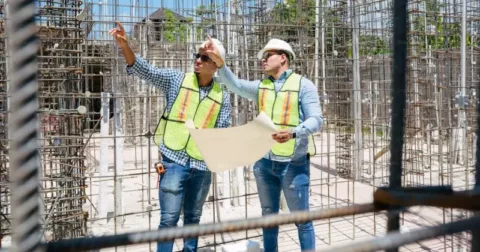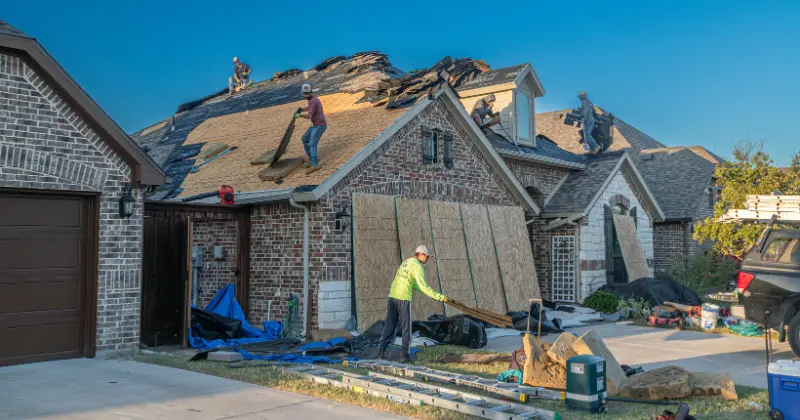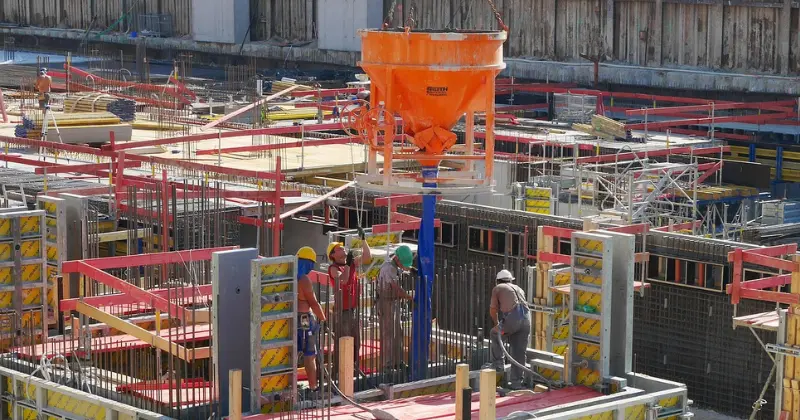11 mins read
How to Prevent or Resolve Common Construction Disputes and Disagreements
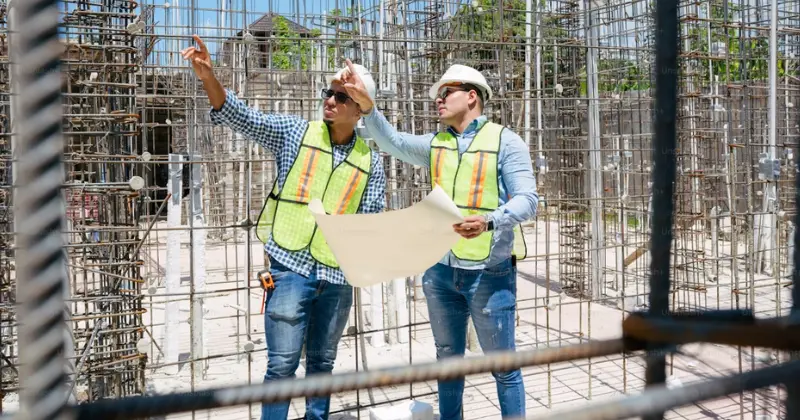
The wide variety of people, processes, documents, and decisions involved in a typical project make disputes in construction almost inevitable. This has always been true, so strategies have evolved to keep minor disagreements from becoming full-scale legal battles that can undermine relationships and project success.
In this blog post, we explore the various types and causes of construction disputes, and methods that can be used to resolve them fairly. We also examine the role of software tools in improving the underlying communication issues behind many disagreements.
What are Construction Disputes?
A dispute in construction is a disagreement between two or more parties involved in the execution of a project. These disagreements often arise based on differing interpretations of the contract, or the responsibilities of vendors, contractors, and other stakeholders.
Contract disputes in construction are common, since the signed contract is the legally-binding document used to capture project expectations in detail, along with the roles and responsibilities of each party. Digital contracts and “smart” contracts help to accelerate issue resolution, but the rapid adoption of software and technology has created new gaps in knowledge and understanding that can also result in disagreements.
What are Common Types of Disputes in the Construction Industry?

Disputes in construction industry settings can be caused by a variety of factors, including documentation issues, changes in site conditions, design flaws, scope changes, and other circumstances that put the interests of various team members at odds. The most common causes reflect the unpredictable nature of the construction industry, and the potential for misunderstanding that is part of any complex endeavor.
1. Scheduling disputes
Scheduling issues are at the heart of many disputes in construction, since unforeseen circumstances like weather delays, rework, and supply chain issues can easily push completion dates beyond the original terms. Schedule conflicts can also arise when project changes create resource constraints that increase material, labor, or equipment costs. Contract terms should cover schedule issues and delays in detail to clarify financial responsibilities in advance and avoid dispute escalation.
2. Payment issues
The goal of every contractor and subcontractor is to deliver high-quality work that meets all expectations and garners repeat business, with on-time payment for services rendered expected in return. Delays in contractor payments based on slow invoicing processes, questions on deliverables, or client financial issues can lead to serious disputes that can disrupt or stall progress.
Payment issues can also cascade down to other stakeholders, with 43% of subcontractors reporting they do not have enough working capital to cover unexpected expenses. This means subcontractors rely on prompt payments to obtain the resources they need. Disputes between contractors and subcontractors are often the result when delayed payments from clients create cash flow issues for general contractors paying their specialist teams.
3. Contract disputes
Most disagreements during projects are considered a type of construction contract dispute, since the contract is the ultimate source of truth for all stakeholders to follow. Along with the construction agreement, the contract includes the drawings, construction specifications, scope of work (SOW) and other important documents that fully define deliverables and other expectations. Taking the time to draft and review clear and detailed contracts is one of the best ways to prevent disputes.
4. Drawing interpretation
Disputes in construction contracts are frequently based on the interpretation of drawings. Unlike text documents, drawing packages and construction blueprints contain layers of complex information that can easily be misunderstood, especially when drawings and specifications conflict, or key information is missing from the package.
Drawing issues can also create errors during quantity takeoff and estimation processes, which can lead to underbidding labor and materials. This eventually leads to conflicts when additional costs must be absorbed and responsibility for these expenses is unclear.
5. Quality issues
Quality expectations for materials and workmanship can also create friction between project team members. Once again, unclear or ambiguous specifications lead to uncertainty over quality standards, causing contractors, project managers, and clients to disagree over whether the agreed-upon quality standards were met. Defective material issues can be difficult to resolve quickly, with suppliers, contractors, and procurement teams passing responsibility when the root cause of the problem is unclear.
6. Change order disputes
Change orders are an inevitable part of every project, along with the disputes in construction that can accompany them. Disagreements may arise over the associated cost increases, changes to the SOW, delays in approval, lack of details in the change order itself, or the impact of the change on other facets of the project. Change orders can be initiated by the client, contractor, architect, and other key construction roles, which can lead to arguments over the necessity of the change, and the additional time and money it adds to the project.
7. Professional negligence
This category of construction disputes arises when poor design, planning, or material selection practices lead to safety, workmanship, or regulatory issues during the building phase. For example, a design that did not adequately address soil composition or seismic risks might lead to foundation damage that requires costly rework. While the contractor might claim the issues were due to professional negligence by the design team, resolving the dispute fairly can become a complicated process.
Key Construction Resolution Methods

Construction dispute resolution has evolved to include multiple options, with each successive level requiring more time and outside intervention. This makes it important to resolve issues as quickly as possible, with respectful collaboration and fact-based decisions driving the outcome.
Negotiation
Negotiation involves direct communication between the two parties to reach an agreement. Resolving issues through this relatively informal process is the best way to preserve the relationship, prevent delays, and avoid diverting attention away from important construction tasks. Establishing ground rules ahead of time, researching documents and records, and active listening practices help to keep disputes from escalating beyond informal negotiation.
Mediation
Including a neutral third party in the discussion can be an effective way to move the conversation forward and find opportunities for compromise that the primary parties had not previously considered. Mediators help guide the negotiation process, but do not make decisions or promote specific solutions. This practical approach allows the parties to negotiate their own agreements in a confidential setting and avoid formal legal proceedings.
Arbitration
Much like the mediation approach, arbitration requires the participation of a neutral third party to help resolve the dispute. However, unlike less formal construction dispute resolution methods, the arbitration process allows the third party to decide on the matter without input from the two parties seeking guidance. Along with a lack of direct control, arbitration also requires more time and money, and the arbitrator’s decisions are considered legally binding.
Litigation
Filing a lawsuit against the other party should be considered a last resort, since it requires expensive attorney fees, formal evidence gathering and discovery, and time-consuming pretrial hearings that might precede an equally exhausting trial before a judge or jury.
Legal proceedings are likely to permanently damage the business relationship and can also generate negative publicity for one or both parties. This option should be reserved for serious construction contract disputes; examples include unpaid mechanics’ liens, extreme negligence, or other circumstances that make an amicable settlement impossible.
What Can Software Do to Prevent Disputes in Construction?
Software tools are bridging the communication gaps between stakeholders that lead to temporary disputes or costly escalations. Shared access to the latest contract documents and project status information makes it easier to view critical issues through a common lens and negotiate solutions based on data-driven decisions.
RIB Connex is a cloud-based construction management software platform designed to enhance collaboration and provide useful insights throughout the project lifecycle. Key features and capabilities supporting construction dispute resolution include:
- Streamlined, configurable workflows for process and change management
- An interactive BIM viewer to give teams easy access to 2D drawings and 3D models, and promote cross-functional design collaboration
- Digital management of inspections, QA plans, defects, and safety issues to improve real-time visibility and streamline the handover process
- Interactive dashboards to proactively identify issues that are likely to affect the schedule, design, or scope of work
Conclusion
No one enters a business relationship in construction or any other industry expecting to have serious disputes with clients, peers, or partners, but differences of opinion are part of doing business. Progressive dispute resolution methods allow parties to work out amicable solutions before resorting to legal recourse. Construction software can become the olive branch that keeps these disputes from escalation.
RIB Connex mitigates project risks and disputes with customized workflows and advanced collaboration tools that break down silos and improve transparency. Easy data transfer and communication to and from mobile devices enhances visibility into quality issues and changes.
To learn more about how RIB Connex bridges gaps between stakeholders to manage disputes effectively, get your free demo today!
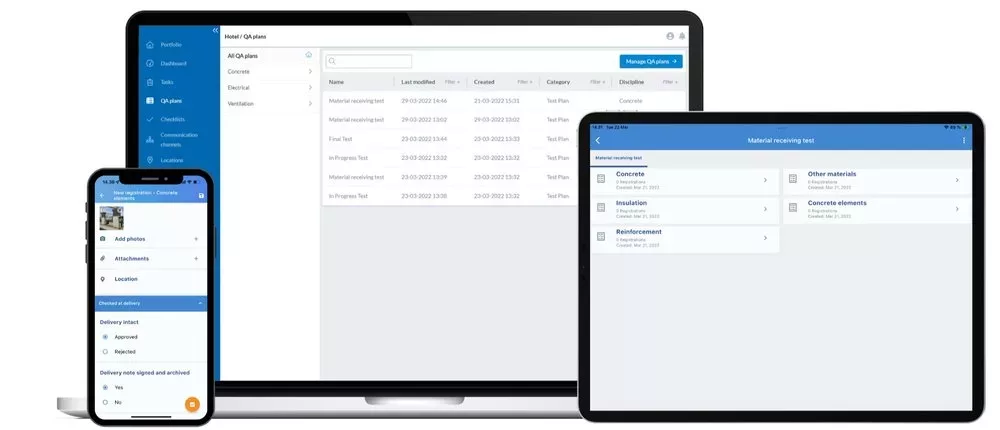
Most Recent
11 mins read
11 mins read
10 mins read
10 mins read
Blog Categories
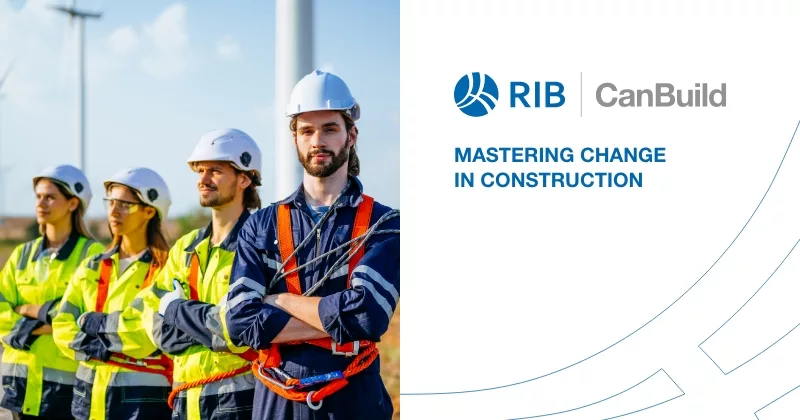
Ebook
